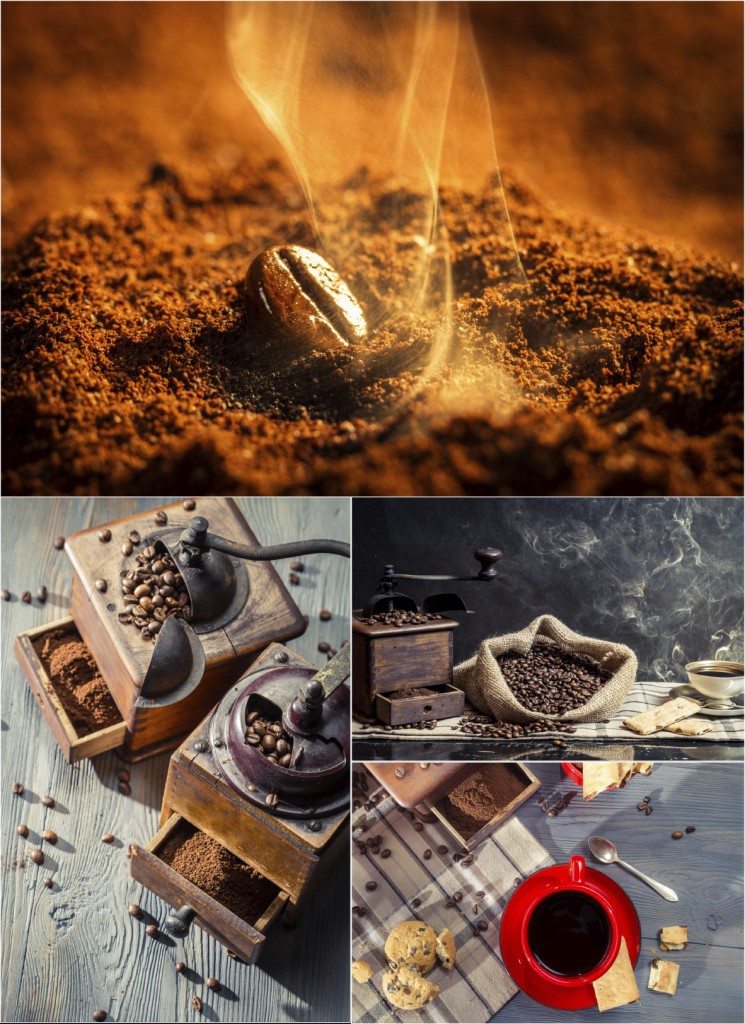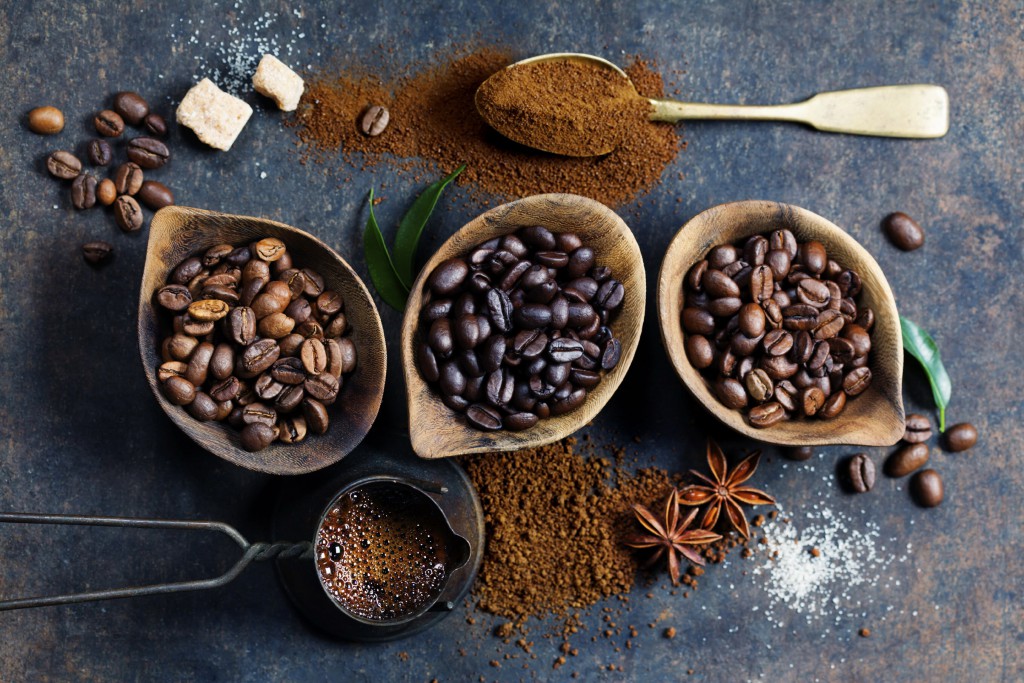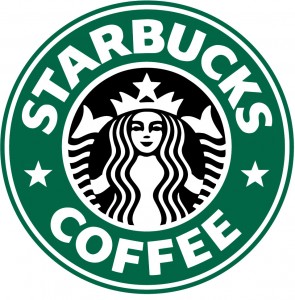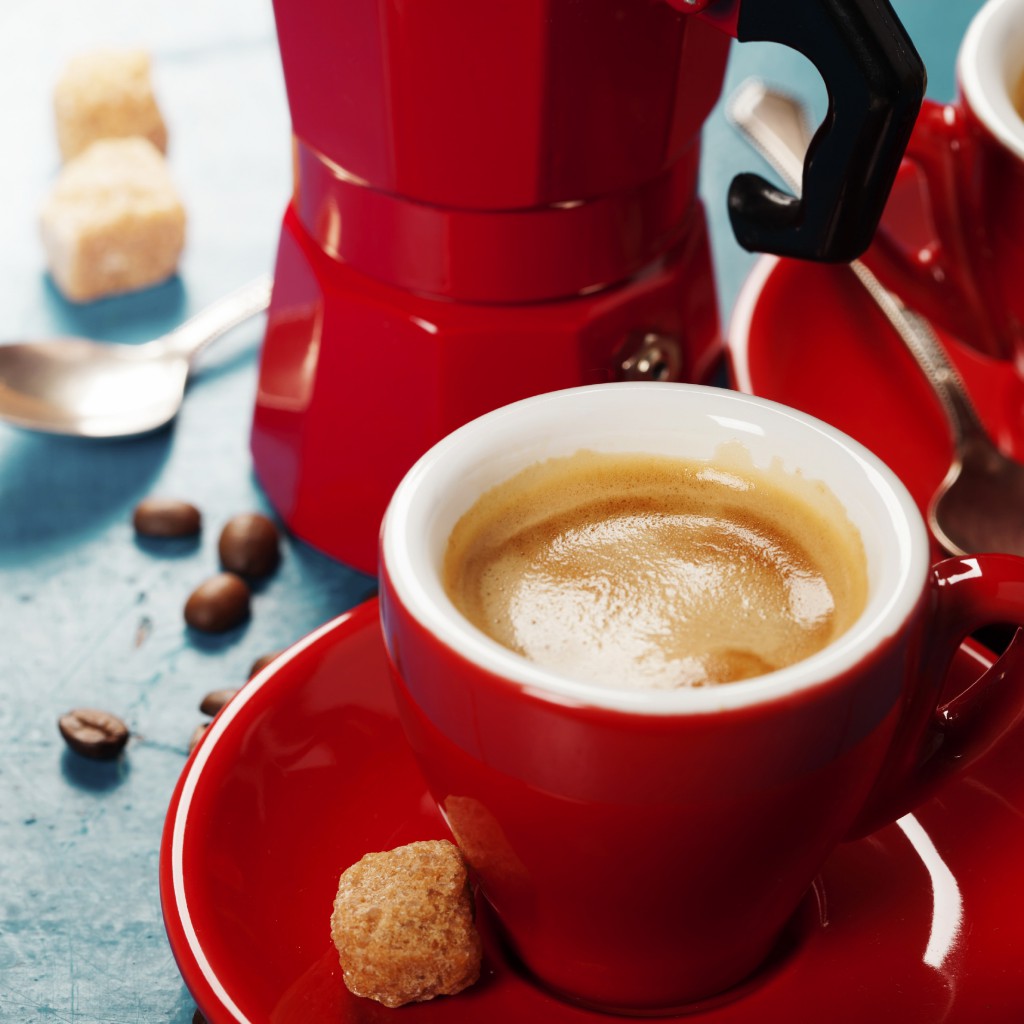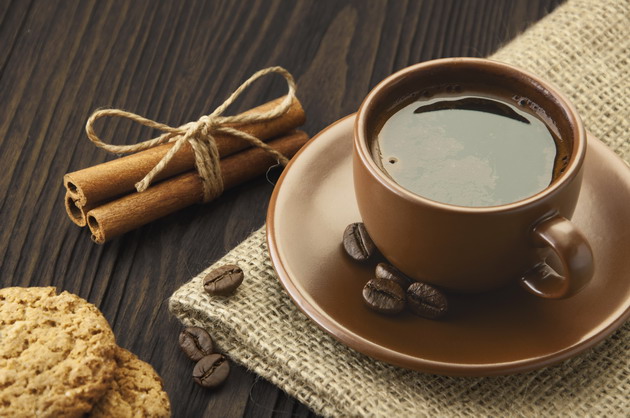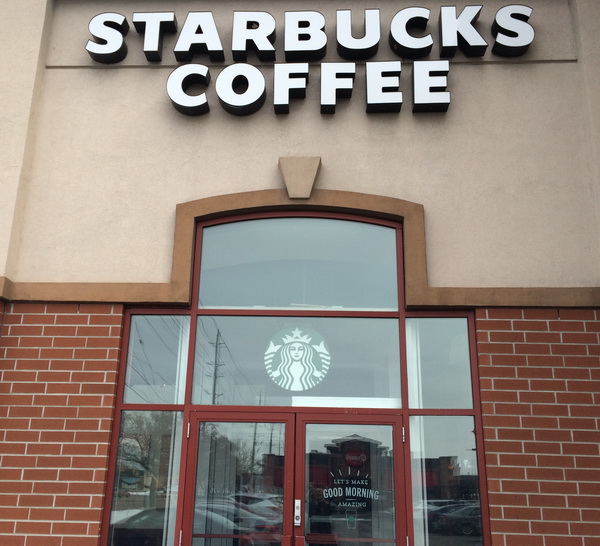 When I open the door to Starbucks on O’Connor Street, long shafts of September sunlight stream in, ricocheting off the chrome espresso machine and the cellophane-wrapped bags of coffee.
When I open the door to Starbucks on O’Connor Street, long shafts of September sunlight stream in, ricocheting off the chrome espresso machine and the cellophane-wrapped bags of coffee.
The smoky, dark chocolate aroma of brewing coffee snakes down my central nervous system. I feel faint with the need for caffeine. On most Sunday mornings, I’m less bright-eyed squirrel, more startled raccoon.
A young auburn-haired woman named Bethany Wade bounds to the door and greets me with the perky inflection of the highly caffeinated. “Welcome!” she says. “We’re so glad you can join our group.”
Wade trains Ottawa recruits to become Starbucks “baristas.” Coffee traditionalists take issue with the company’s use of the title, the Italian word for espresso barman. In Italy, career baristas, in crisp white  shirts and tuxedos, work in cafés for years before earning the designation—and are paid $40,000 to $60,000 for their skills.
shirts and tuxedos, work in cafés for years before earning the designation—and are paid $40,000 to $60,000 for their skills.
That hardly compares with most of their North American equivalents, though Starbucks does pay better than most and when we’re done, we’ll have completed twenty-four hours of training.
She introduces me to five women and two men sitting on chairs in a circle, group-therapy style. They all look younger than thirty, as does Wade herself. Waiting for the last arrival (a young man with two-day stubble, clearly not a morning person either), one woman jokes that we need coffee.
“I’ve already had three cups, I’ll be awake till Friday,” a lanky young man says.
“Three cups? I’d have to take a nap after that,” snickers a small, wiry woman.
Wade begins. “Today we’ll learn how to taste coffee and how to make it. We’ll talk about Starbucks’ history and culture and what it means to provide Legendary Service,” she says, raising her eyebrows.
She makes four pots of coffee, each in its own French press—a glass pot in which boiling water is poured over fresh grounds and then a plunger is slowly pushed to the bottom. This makes a far better coffee than household drip percolators: the water never really gets hot enough and the filters leave a papery taste.
We take a cup of the first coffee for a tasting or “cupping.” This is sacred Starbucks tradition: at headquarters in Seattle, every meeting starts with a cupping and all baristas are expected to taste coffee three times a day. (It’s a bad career move to skip coffee break.) We wrap our hands around cup and nose to better appreciate the aromas. I’m just relieved to be using two hands at this time of the day.
“So what do you smell?” Wade asks.
Everyone looks into their cups.
“Try using words you’re comfortable with, so you can describe the coffee for customers without getting too technical,” she coaxes. “For example, you might say that a coffee is mild, something that’s good for the morning.”
That’s because the beans are first roasted and then prepared as a drink. Professional cuppers use many wine tasting terms to describe the aromas: berries, nuts, citrus fruit, flowers, earth and smoke. Bad smells include straw, sweat and horse—unless you’re drinking a cup after a romp with the stable man.
Wade then asks us to slurp the coffee and roll it around our mouths. “Does it linger? What flavours sit on your palate?”
The coffee smells like rusty drain water moistening charcoal briquettes. Out of fear that we’re tasting the house blend, I conceal my distaste, but the wiry woman doesn’t hold back, screwing up her nose in distaste.
Wade seems oddly pleased. “Don’t you like it?” she asks.
The woman says it tastes metallic to her.
“Right! This one is—,” Wade lowers her voice— “instant coffee from the grocery store.” We all glare at the village outcast.
Most instant coffee, she explains, is made from robusta coffee beans, which are cheaper to grow: they thrive at low altitudes and resist disease and frost. But they also have less flavour than the more expensive, lower-yield arabica beans, which grow best in volcanic soil at altitudes of 3,000 to 4,500 feet.
Those beans mature slowly in the cool mountain air, which gives them an intense flavour and a balanced acidity, like wine grapes grown in cool climates. These are the beans that Mrs. Folger and Juan Valdez were always going on about. They’re the only kind that Starbucks uses.
We try the next coffee, and Wade asks what we pick up. I’m paranoid about declaring my love for another No Name brand, though, so I keep quiet. But a woman in a Gap tracksuit says, “I like this one—it’s lively.”
What makes coffee lively is acidity—not so much a sour or bitter taste as a tangy, bright flavour tasted along the sides of the tongue. In the trade it’s called snap. Kenyan and Latin American coffees, for example, usually have good snap.
Along with aroma and acidity, the third important aspect of coffee is body: how rich and weighty it feels on the palate. Light-bodied coffees from regions such as Sumatra have a texture like water, medium-bodied ones, such as Guatemalan, are like milk and full-bodied coffees from Costa Rica are more like cream. But it’s rare to find a single coffee that’s strong in all three areas, so they’re often blended for a better overall impression.
Click on the arrow to play the video above. You can expand this video to full screen by clicking the square in the bottom right corner.
By the time we’re on to our fourth cup of coffee, my hands are no longer jitterbugs. My mind has the astonishing clarity of cut diamonds. I want to do calculus, go ice climbing, start a hydroponic lettuce farm, become a rodeo star. I realize that most world problems could be solved if we just threw out the drip percolators and the robusta beans.
Wade moves on to Starbucks history, with the help of a video. In 1971, Gerald Baldwin, Zev Siegl, and Gordon Bowker, liberal arts majors at the University of Seattle, opened the first store to sell good-quality packaged coffee beans. To evoke the romance of eighteenth-century seafaring coffee traders, they named their new venture after Starbuck, the first mate in Moby Dick.
A housewares salesman from New Jersey, Howard Shultz, noticed that his company was shipping a lot of coffee percolators to that small Seattle store and went to investigate. Schultz joined Starbucks as marketing manager in 1982. After a trip to Milan the following year, he saw how Italian life revolved around cafés and convinced the founders to sell brewed coffee, not just beans.
By 1987, Schultz had bought out the founders and there were 17 stores. There were 116 outlets across the country in 1991 when Starbucks became the first chain to offer health benefits and company shares (“bean stock”) to both part-time and full-time employees.
After the company went public in 1992, there were 165 stores; when Barnes & Noble started incorporating the shops in their bookstores in 1993, it climbed to 272; the total went up to 676 in 1995 when the chain started selling its phenomenally successful “frappuccinos,” iced cappuccino drinks.
More milestones were passed when Starbucks entered the Japanese market in 1996 (1,015 stores); when it started  selling coffee-flavoured ice cream in grocery stores in 1999 (2,135 stores); and when it reached its 30th anniversary in 2001 (4,079 stores).
selling coffee-flavoured ice cream in grocery stores in 1999 (2,135 stores); and when it reached its 30th anniversary in 2001 (4,079 stores).
There are now 7,000 stores in 32 countries with a workforce of 78,000. Starbucks trains 6,000 baristas a year. Future plans include opening a store in Italy, the caffeine equivalent of bringing coals to Newcastle given that there are already 200,000 espresso bars in the country.
Today, three new Starbucks stores open every day—remarkable for a company that didn’t create the café and doesn’t even make the best coffee. The company’s growth has made it a symbol for some of runaway American capitalism. At the 1999 summit of the World Trade Organization, anti-globalization activists protested against the stores. As well, web sites such as www.ihatestarbucks.com and www.starbucked.com post the disgruntled feelings of those who’ve been “burned by the ‘bucks.”
Starbucks has an aggressive strategy when it comes to dominating its market. In New York City, there are three Starbucks at Astor Place. (The satirical magazine The Onion recently ran the headline: “A New Starbucks Opens in Restroom of Existing Starbucks.”) Schultz describes the company as “the biggest little business in the world,” but has acknowledged a strategy of cannibalizing his own stores at a rate of 30 per cent a year. Starbucks has been criticized for paying high rents to open close to a Mom and Pop shop in an effort to increase their lease costs as they lose business. Like Wal-Mart and McDonalds, Starbucks has come to represent a threat to small-town life.
Of course, Schultz believes that’s the beauty of a free market—a market he’s helped to enlarge by bringing better coffee to the masses. Some 25 million customers are in Starbucks weekly, the most loyal of whom return eighteen times a month.
On the one hand, Starbucks saturation has bastardized café society: coffee shops were traditionally quirky places that reflected the personalities of their owners. And while for some drinkers it may feel like a failure of imagination to go to Starbucks, there’s no doubt that the chain has helped to deliver us from the angry black sludge of instant coffee. And there are actually more independently owned coffee shops now than there were ten years ago.
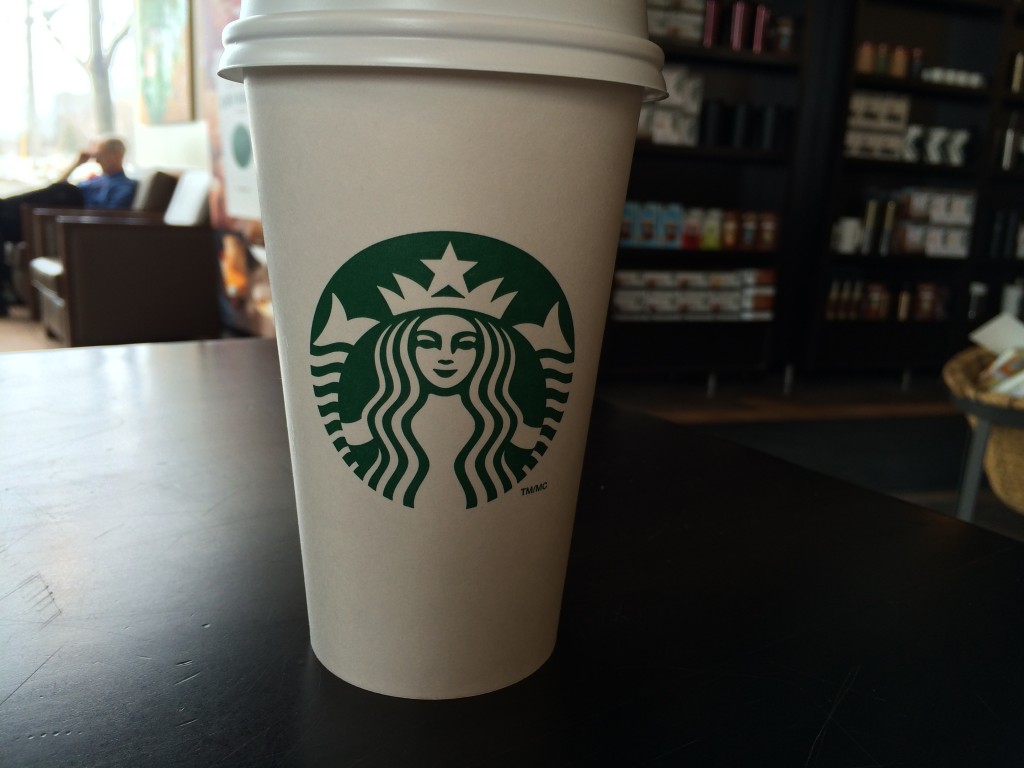 Of the almost 500 million cups consumed a year in North America, specialty coffee is growing at fifteen per cent a year—so Starbucks seems here to stay. Perhaps the latest proof of its infiltration into pop culture is the brew-ha-ha over an upcoming feature in Playboy magazine entitled “The Women of Starbucks”: apparently, a bevy of “coffee-making cuties” will pose bare-ista.
Of the almost 500 million cups consumed a year in North America, specialty coffee is growing at fifteen per cent a year—so Starbucks seems here to stay. Perhaps the latest proof of its infiltration into pop culture is the brew-ha-ha over an upcoming feature in Playboy magazine entitled “The Women of Starbucks”: apparently, a bevy of “coffee-making cuties” will pose bare-ista.
I’ve gleaned this information from late-night research fueled by Starbucks Anniversary Blend—none of it seems to be on Wade’s corporate video. We move on to another video, this one about growing and roasting coffee. Thousands of freshly harvested green beans tumble into giant drum roasters that rotate slowly at 500oF. The longer the beans roast, the more caffeine they burn off—up to 15 per cent. Arabica beans naturally burn off more caffeine than robusta, which is why they have 40 per cent less caffeine.
After about eight minutes, the beans start to break along their seams with a frantic popping, perspiring oils and sugars. Two minutes later the sugars start to burn, producing that glorious caramelized flavour. At twelve minutes, the shiny, black beans look as though they’ve been washed in motor oil; beans intended for light roasts, such as Starbucks Breakfast Blend, are removed. Only beans for the dark French Roast coffees, such as the Starbucks Espresso Roast, stay in for fifteen minutes.
(Such critics claim that all Starbucks beans are over-roasted, which is why they’ve nicknamed the chain Charbucks.) A medium roast, like Viennese, allows more subtle flavours to come through.
The video is over, Wade flips the lights back on. After drinking coffee in the dark for so long, every surface of the store seems to vibrate in sharp contrast. It’s time for us to make coffee. She reviews the Four Fundamentals: freshness, grinding, proportion and water. Beans should be bought fresh, since they won’t keep longer than two weeks, and stored in an airtight container at room temperature. (In the fridge, they absorb odours and in the freezer, lose moisture.) Grind the beans just before making coffee, to expose more of the surface to the air and release the flavour, like decanting wine.
We take turns grinding the beans. The shorter the brewing process, the finer the grind: fine grinds slow down the water and extract maximum flavour. It’s also important to get the proportions right: two tablespoons (ten grams) of ground coffee for every six ounces (180 millilitres) of water. Don’t be tempted, as some people are, to make your coffee stronger by increasing the amount of ground bean; that results in under-extracted, less flavourful coffee. Just buy a stronger coffee.
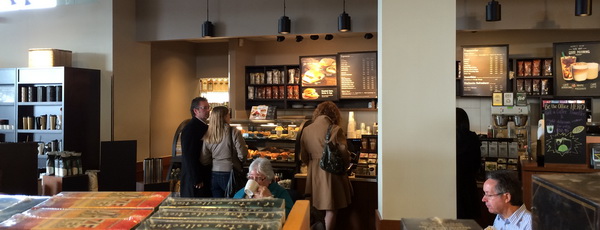 Use filtered water, free of harsh-tasting impurities and heated to near-boiling (195oF to 205oF or 90oC to 96 oC). Those home percolators only heat water to about 185oF or 100 oC—not enough to extract the flavour. But water that’s too hot can burn the coffee, except for espresso which we’ll learn about later.
Use filtered water, free of harsh-tasting impurities and heated to near-boiling (195oF to 205oF or 90oC to 96 oC). Those home percolators only heat water to about 185oF or 100 oC—not enough to extract the flavour. But water that’s too hot can burn the coffee, except for espresso which we’ll learn about later.
We’ve come to the end of long day of blissful mission statements, the highest principles of freshness and getting in touch with our coffee personalities. The combination of sleep deprivation, caffeine and non-stop chatter is powerful. On my way home, I cut off the Volkswagen that’s only going the speed limit, then realize that I forgot to get my car from the parking lot.
Next up is my day of in-store training at the Starbucks on Elgin Street, one of the busiest stores in the city. I wear standard barista dress: black shirt and pants, closed-toe shoes, hair tied back and no nail polish or perfume. As I walk up to the shop, it occurs to me that the chain hasn’t just changed the urban landscape, it’s also changed our vocabulary. There’s no such thing as a plain “cup of coffee” any more.
Now it’s a double-tall, half-caf, extra-shot, sugar-free, two-percent, half-vanilla, no-foam, no-whip mocha Valencia in a grande cup. But I don’t generally use complete sentences until after lunch. How will I ever remember all those drinks, let alone make them?
 The store is filled with the cacophony of caffeine: the whirl of grinders, the rap-rap-rap of metal tampers, the crinkle of coffee bags opening, the steam-locomotive hiss of the milk frothers, the clink of spoons against mugs and the sighs of customers taking their first sips. The three baristas stand in the steam between the grinding and espresso machines, pulling levers and push buttons. They look like characters in a Dickens factory.
The store is filled with the cacophony of caffeine: the whirl of grinders, the rap-rap-rap of metal tampers, the crinkle of coffee bags opening, the steam-locomotive hiss of the milk frothers, the clink of spoons against mugs and the sighs of customers taking their first sips. The three baristas stand in the steam between the grinding and espresso machines, pulling levers and push buttons. They look like characters in a Dickens factory.
Matt Fantin, the store supervisor, welcomes me and, tossing his head toward the seven people lined up, says, “This is nothing, wait until you’re on the floor in about twenty minutes.” I feel more carbonated than caffeinated: my heart jumps wildly, hurling itself against my ribcage, trying to make a run for it.
Fantin gives me a green apron and introduces me to the baristas: Alethea McCaffrey, Mariam Diabate and Connie Sortino. They talk fast, their banter has a catch-and-release playfulness.
“Where’s Grande Low-Fat Latte?” Diabate asks.
“He went on vacation for two weeks,” McCaffery replies, her hands flit like two pale hummingbirds on the machines.
Part of Starbucks success is built on the hero culture of the barista. Visiting Milan, Schultz recognized the intimate relationship that Italian baristas have with their customers: they blend the empathy of a bartender, the equanimity of an English butler and the culinary artistry of a chef.
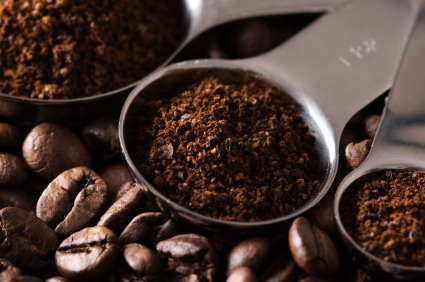
Unlike wine, for which a sommelier controls only controls the serving temperature and glassware, a good cup of coffee depends largely on the skill of the person preparing it.
Some regulars come in three or four times a day; many don’t even specify their orders, knowing that the baristas remember them and their names.The line-up now snakes to the door and each time it opens, a small gust of cool air slips in under the flannel comforter of coffee warmth. There’s a sleep-deprived young mother with her infant, a business man who seems jetlagged and a student who looks as though her term paper is due. One by one they collect their cups of liquid reassurance that fill the wrinkles in their lives.
Fantin whips up several coffee drinks for me: an espresso macchiato (lightly “marked” with warmed milk), a latté (one-third espresso, two-thirds steamed milk), a cappuccino (one-third espresso, one-third steamed milk and one-third foamed milk) and a frappuccino (a shot of espresso over crushed ice and milk). He writes down a chart that simplifies the 17-adjective drinks into basic building blocks, starting with espresso. I’m beginning to understand—and to relax, thanks to the drinks. My veins fill with white light that carries messages to my nerve centre in nanoseconds.
“Let’s get you pulling espresso shots,” Fantin says, taking me to a magically monstrous machine that gleams in the morning sun. He shows me how to pour in the beans and adjust the machine for a French grind. A single shot, he explains, takes fifty beans—and just one bad bean ruins the taste. That’s why the best coffees, estate-grown ones like Jamaican Blue Mountain and Kona, are first hand-picked and then scanned with light waves that pick out unripe or rotten beans.
We tamp the grounds down into the portafilter, which looks like a flat-bottomed ice-cream scoop, and wrench it into the espresso machine where the water will pass through it into the two shot glasses underneath. The water, with a 140-pounds-per-square-inch force, trickles slowly down through a fine grind, absorbs into the coffee dust and extracts the essential oils. The process is precisely timed, at between 18 and 23 seconds. Any faster, and the espresso is watery and bland; any longer and it becomes over-extracted and bitter.
I push the button, two dark brown streams gush out of the spigots. The timer reads twelve seconds.
“What happened?” I ask Fantin dismayed.
“Short pull. Could be your grind, your tamp or your back-flushing,” he says, which sounds deeply personal to me. “Let’s check the grinder—sometimes it needs to be recalibrated four or five times a day, depending on the weather. Humidity makes espresso run faster.” But the machine seems to be working fine.
“Let’s look at your tamping,” he says. “You need thirty pounds of pressure so that the water doesn’t run through the grounds too quickly.” I try again, pushing with both hands and briefly lifting myself up into the air over the metal disc. “You definitely get points for enthusiasm,” Fantin observes. But my next shot is still only sixteen seconds. Starbucks baristas throw out anything that’s under eighteen seconds.
I throw myself into it, like a baseball pitcher at spring training camp trying knuckleballs and side-twisters—experimenting with different beans, grinds, fill levels and tamping pressures. Getting it right requires not only good deltoids, but also patient craftsmanship: a difference of a few seconds, degrees or ounces is monumental. The technique requires the gentle touch of making soufflé.
Ideally, espresso should ooze out the spigots like warm honey. The coffee oils form microscopic bubbles suspended in the caramel-coloured foam that floats on top, which the Italians call crema. These aroma molecules burst on your nose and in your mouth, coating your senses with pure coffee essence, giving the drink its rain-cloud density.
Good crema can hold sugar granules suspended on top for several seconds and it lasts a half an hour or so before breaking up. But espresso means on the spur of the moment, and is meant to be drunk in one or two gulps. The tiny perfection of espresso runs counter to our North American “bigger is better” mentality, especially since an ounce or two can look orphaned in an eight ounce cup.
The taste of espresso comes closest to the luxurious aroma of fresh-brewed coffee, which is almost impossible to capture since coffee beans deteriorate with every second they’re exposed to the air. The drink is smooth, rich and round, with a long, bittersweet finish. It teeters on the edge of palatability, since there are so many ways for it to taste terrible if made incorrectly.
But when it’s done right, the intimate ritual of espresso transports you to a private world: the slow preparation, the intense aroma, the doll-sized cups and saucers, the small wrist action of swirling the cup, the chestnut-brown designs in the crema. When I finally manage to pull a 22-second shot, I close my eyes and breathe in deeply. Its piercingly strong essence travels back to my reptile brain and calms it. The roof of my mouth feels like suede and I move my tongue back and forth to caress the nap.
“John likes a long shot,” says Diabate, jolting me back from my reverie. That means the water is run through the grounds twice. But much like pressing grapes, the most flavourful coffee elements are extracted in the first two ounces. All you get from the second pass are the bitter compounds, acids and more caffeine. In Italy, hotshot baristas try for the opposite: running a smaller amount of water through the grinds for an ultra-flavourful shot that’s called a ristretto (literally, restricted or narrow). They call it six drops of energy. No wonder coffee is the world’s second-most traded commodity after oil.
This double shot of espresso produces just one ounce of liquid, using the same amount of coffee and time as a normal double. It’s a fleeting, gossamer shot that can actually stall the machine—like throttling an F14 Tomcat Fighter Jet at Mach 2.
But the god shot isn’t for this mere coffee mortal, I’m just praying to make decent espresso. The line now extends out the door. Not everyone is rushing out with their drinks, though: some customers sink drowsily into the big leather armchairs to enjoy their coffee. That fits with Schultz’s original vision for Starbucks as the “Third Place”—an oasis to escape from home and work or school. Part of the company’s contribution to coffee culture was to define the social experience of coffee and the need for a public place to loiter—what Italians call Il dolce far niente (the sweet doing nothing).
The lifestyle marketed is a cross between Cheers where everybody knows your name and Friends where everybody gets to pay $4 for a cup of coffee, even if they don’t have a job. Shultz has observed that Starbucks doesn’t sell coffee, it sells fifteen minutes of relaxation. Indeed, coffee is the liquid comma, period and exclamation mark punctuating our daily rhythms. Of course, the irony is that most customers take their bucket-sized coffee with them and get impatient if they have to wait any longer than the standard three minutes.
Moving over to the next machine, I practise frothing milk. The trick is to heat the milk to between 140oF and 170oF, but no higher, or it will scald into blistering bubbles and lose its creamy texture. I fill a steel pitcher half-full of milk, then put a metal wand and a thermometer into it. (Expert baristas just use their hands on the metal to tell when the temperature is right.) I flip on the switch and set off a thousand screaming kettles. I quickly push the wand in further to get the desired soft hissing as it adds air to the milk.
I discover the foaming verbs of pour, dollop and slop: silken foam lattés are poured, cloud-like cappacuinos are dolloped and my learning samples are slopped into the sink. I learn to bang the milk pitcher on the counter to “densify” the foam and then gently turn it back and forth as I pour. At one point, I create a latté with a towering shaving-cream foam thick enough to suspend an electric razor.
I learn to put the sugar in first to dissolve it without stirring and to use white rather than brown sugar: the former only sweetens the coffee, whereas the latter caramelizes and changes the taste. And I learn that dusting with coca before adding the milk creates an interesting design. Experts pour and swirl espresso shots into the steamed milk in designs of geometric loveliness called latté art, such as rosettes and leaves. I manage to create a Jackson Pollack design, using a technique known as shaky wrist.
Coffee purists, naturally, object to this frothy ocean of milk, claiming that it buffers the true taste of espresso¬—they liken it to mixing Château Lafite with orange juice. Less than five per cent of coffee drinks in North America are consumed as straight espresso; most are made with milk, together with variations of whipped cream and flavored syrups. What we’re really drinking are coffee-flavoured ice-cream sundaes. Perhaps that’s because our tastes run to sweet, not bitter. But an old Turkish proverb says that coffee should be black as hell, strong as death and sweet as sin. It makes no mention of caramel syrup and chocolate sprinkles.
The morning at Starbucks has slid by like a honey macchiato. I ground, I tamped, I pulled, I stamped, I dumped, I poured, I swore, I frothed, I served, I smiled. I became one with my grinder; my hand, a flesh extension of the shot.
I was not some espresso bunny. (Fortunately, no one ordered a drink with more than five adjectives.) I discovered that being a barista is hard work—not my cup of chai latté, though I need one now.


